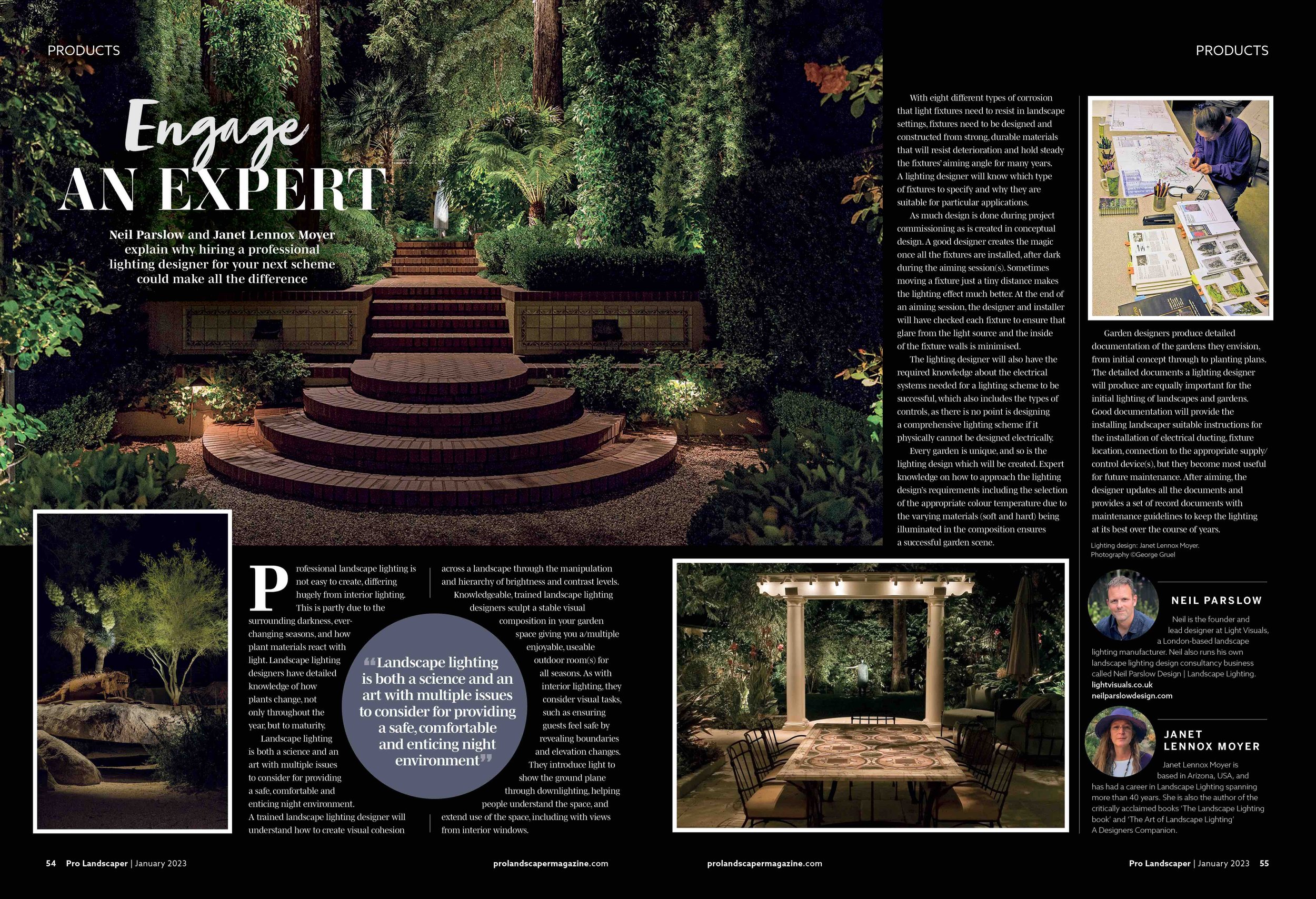Pro Landscape Magazine January 2023 Why Hire a Professional Landscape Lighting Designer.
Pro Landscaper Magazine January 2023 Why Hire a Professional Landscape Lighting Designer.
NEIL PARSLOW AND JANET LENNOX MOYER EXPLAIN WHY HIRING A PROFESSIONAL LIGHTING DESIGNER FOR YOUR NEXT SCHEME COULD MAKE ALL THE DIFFERENCE.
Professional landscape lighting is not easy to create, differing hugely from interior lighting. This is partly due to the surrounding darkness, ever-changing seasons, and how plant materials react with light. Landscape lighting designers have detailed knowledge of how plants change, not only throughout the year, but to maturity.
Landscape lighting is both a science and an art with multiple issues to consider for providing a safe, comfortable and enticing night environment. A trained landscape lighting designer will understand how to create visual cohesion across a landscape through the manipulation and hierarchy of brightness and contrast levels.
Knowledgeable, trained landscape lighting designers sculpt a stable visual composition in your garden space giving you a/multiple enjoyable, useable outdoor room(s) for all seasons. As with interior lighting, they consider visual tasks, such as ensuring guests feel safe by revealing boundaries and elevation changes. They introduce light to show the ground plane through downlighting, helping people understand the space, and extend use of the space, including with views from interior windows.
With eight different types of corrosion that light fixtures need to resist in landscape settings, fixtures need to be designed and constructed from strong, durable materials that will resist deterioration and hold steady the fixtures’ aiming angle for many years. A lighting designer will know which type of fixtures to specify and why they are suitable for particular applications.
As much design is done during the project commissioning as is created in conceptual design. A good designer creates the magic once all the fixtures are installed, after dark during the aiming session(s). Sometimes moving a fixture just a tiny distance makes the lighting effect much better. At the end of the aiming session, the designer and installer will have checked each fixture to ensure that glare from the light source and the inside of the fixture walls is minimised.
The lighting designer will also have the required knowledge about the electrical systems needed for a lighting scheme to be successful, which also includes the types of controls, as there is no point in designing a comprehensive lighting scheme if it physically cannot be designed electrically.
Every garden is unique, and so is the lighting design which will be created. Expert knowledge on how to approach the lighting design’s requirements including the selection of the appropriate colour temperature due to the varying materials (soft and hard) being illuminated in the composition ensures a successful garden scene.
Garden designers produce detailed documentation of the gardens they envision, from initial concept through to planting plans. The detailed documents a lighting designer will produce are equally important for the initial lighting of landscapes and gardens.
Good documentation will provide the installing landscaper suitable instructions for the installation electrical ducting, fixture location, connection to the appropriate supply/control device(s), but they become most useful for future maintenance. After aiming, the designer upates all the documents and provides a set of record documents with maintenance guidelines to keep the lighting at its best over the course of the years.

